What can we say about Gary Baseman that hasn't already been said? Probably nothing, but what the hell, let's do an interview anyway. Last week we visited with Gary over lunch and a visit to his studio in Los Angeles. He was in the midst of... well, a million things; preparing for his new show in Barcelona, designing new toys, looking over prototypes of future toys, sending out products to fans, doodling, and probably a bunch of other things. But he kindly took a little time out to speak his mind on a few subjects.
So without further ado, here is the interview, along with some pictures of the studio, and some of Gary's amazing work.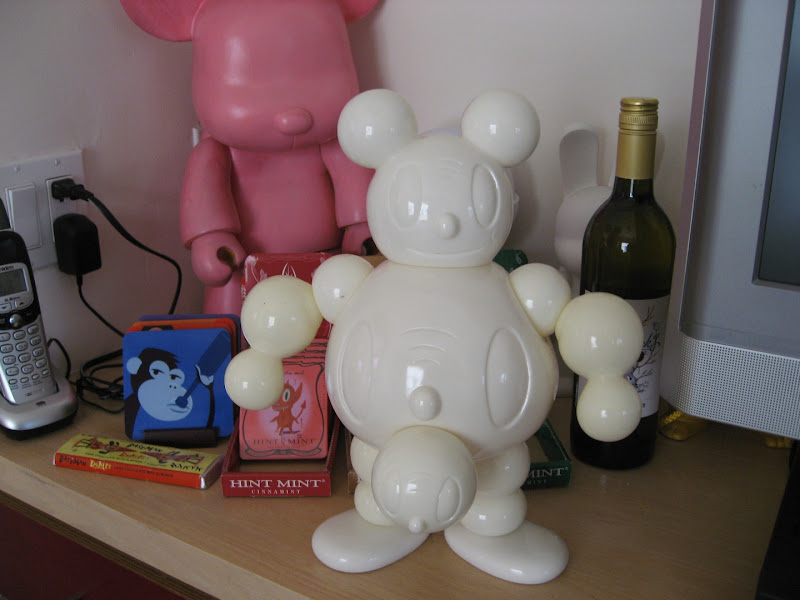
Prototype of Baseman toy
PopDrawer: Tell us about your new show.
Gary Baseman: “Knowledge Comes with Gas Release,” is the title of my new solo exhibition, opening July 3rd in Barcelona at the gallery Iguapop. We’re releasing a hardcover 44 page catalog of the work from the show. The title comes from my mishearing the lyrics of one of my favorite songs, David Bowie’s “Quicksand.” The chorus is “Knowledge comes with Death’s release.” I misheard Gas for Death. But is there a real difference?
In Latin culture, I have been told that there are Spanish phrases that releasing gas is a metaphor for coming up with ideas. And, a little Death is a term for orgasm. My little spheres in my art represent Manifestations of Desire. I imagine them in the atmosphere all around us. Desire morphing all around.
It was an interesting challenge with this show being the first solo, since my Hide and Seek in the Forest of Chou Chou. In the “ChouChou” exhibition, I had been working on a visual narrative with strong character development. I found myself, actually living in the world of Chou Chou. I love to explore my own parallel surreal universe and introduce it to this world, where the themes are all about the human condition.
But in the “Knowledge” exhibition, I wanted to challenge myself in a different way, and I found myself trying to understand the aesthetic nature of what I’m painting, dealing with a sense of abstraction. So I maintained the iconic nature of my work, then removed the environment, the background, the narrative and concentrated on the portraiture. I, then, had the icon interact with the abstract elements of my “manifestations of desire” of the painting. My art has been all about longing, desire and lust, control or loss of control.
I challenged myself to see how far I could take the M.O.D.s and interact with the portraiture. The bubbles become part of the figures themselves,– becoming the hair, a hat, flowers – and then let the viewer interpret it.
Manifestations of Desire
PD: You talk about narrative in your paintings. Could you give an example of a story behind one of your paintings?
GB: Fuck you. I mean, sure. They’re not necessarily written story narratives, but more like visual interpretive narratives. For example, the last big LA show, Hide and Seek in the Forest of ChouChou, I created a world run by these demons that love to keep chaos, hate and fear in this world of my nymph girls. The demons have maintained order by keeping all the girls fighting with each other and feeling out of control. One day, a chouchou shows up in the world. They seem to have the power to remove all the girl’s negative energy, all their hate, all their insecurities, all their fear, and absorb those elements into their own bodies, and turn them into creamy gooey love that oozes out of their bellybuttons. As you would think, the demons are not too fond of the chouchous and thus the conflict begins.
PD: The nymph girls are the only morphologically human characters in this world. Do they represent all people? Are they even people at all?
GB: They’re girls. [laughs].
PD: So you’re representing the emotions that women are displaying, their fears, their anger…
GB: Either that or my perception of their fears, their anger. Or my visual representation of my perception of their emotions. You know. I don’t even remember what you were asking. All I know is that this is a world that I want to be in. I want to be their chouchou. I want to be their savior, I want to live in a world where I work hard and play hard, and be able to enjoy life in the moment. It’s my view of the world. It maybe fucked up. I may need years of therapy. But the chouchou’s create a non-malicious world of feeling how it is to be alive to its fullest potential.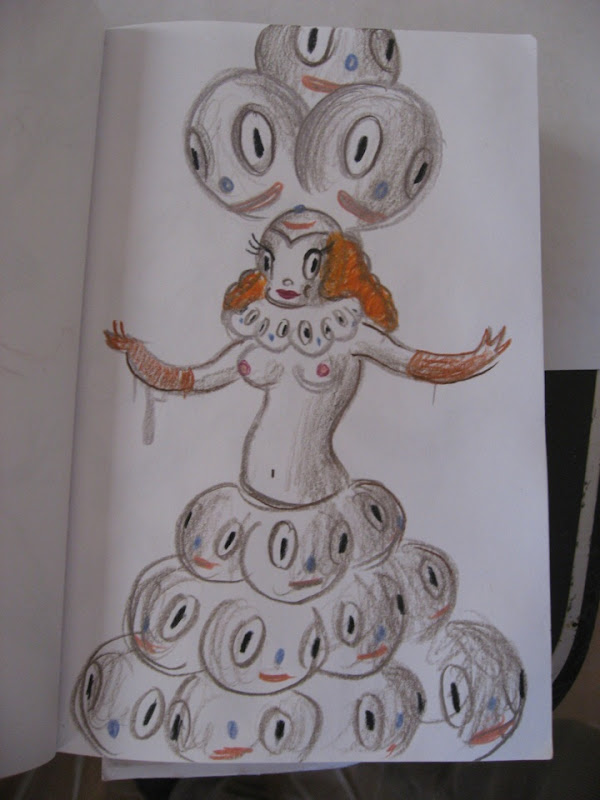
Baseman's design for Carnivale costume
PD: In moving from paintings that have narrative and allegory to paintings that seem more to be an aesthetic exercise, what is it that you are trying to accomplish, artistically?
GB: I always need to push myself. I think it is important for me to concentrate on the esthetic nature of my work as I move into my next phase. I’m looking deeper into the paint itself, the layering. to refocus on how I understand the new relationship I have with my canvas. How to advance the sophistication of my own visual vocabulary.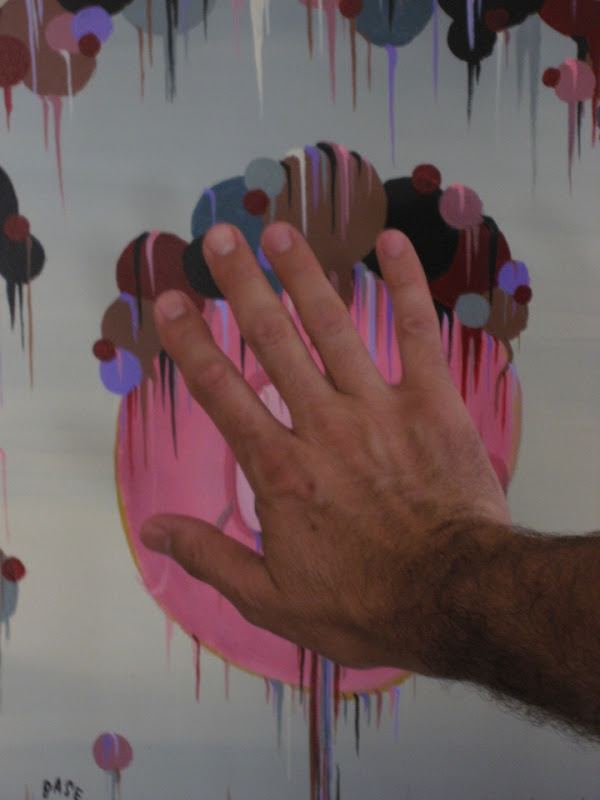
Baseman's hand hiding his new work
PD: Let’s talk about “Pervasive Art,” a term that you created for the broad artistic movement that some call Pop Surrealism or Lowbrow. For you, what is the difference between the term Pervasive Art and these other labels.
GB: I feel PopSurrealism and Lowbrow are too shallow of a term to describe this art movement. They both seem to try to describe the content of the work. The content alone isn’t why I find our art movement interesting and important. The term Pop Surrealism isn’t descriptive of this group of artists. What does it describe? Why don’t you just call it “Big-Eyed-People Art?” Is it called Pop Surrealism because it’s about pop culture, and it’s surreal? To me that’s not that interesting. Pervasive Art describes the strength of the artist as a visual message-maker and the success of the artist to spread their art and message over a number of mediums. The traditional fine art community hasn’t been able to come to grips with the fact that we’re an underground art culture, but we’re more well-known than 90% of the fine artists out there. Do some of us come from commercial art? Yes. Mark Ryden did, the Clayton Brothers, Eric White, Joe Sorren, we were all top illustrators at one time doing work with every major magazine and newspaper, painting with our own visual voices but working within the confines of an editor’s and publication’s boundaries. We all sacrificed the security of day to day assignments. We all gave it up to paint. But 85% of time when someone writes an article about us now, they still call us illustrators. I don’t mind that if I’m illustrating something, you call it illustration, but if I’m not illustrating something, it’s a painting.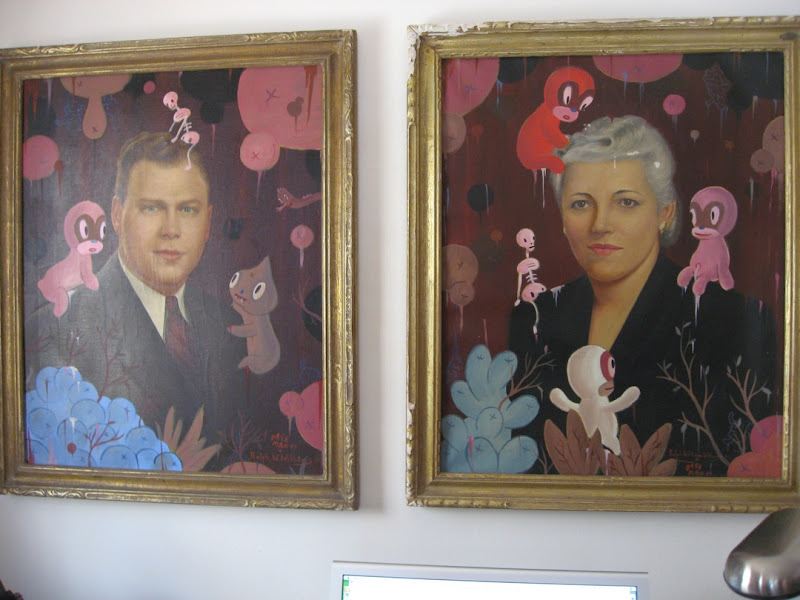
PD: Is there an aesthetic that ties all Pervasive Art together?
GB: Absolutely. Not.
PD: So how do you know a Pervasive Artist when you see one?
GB: By the tattoos on their arms. (smile)
PD: What other media do you want to pervade?
GB: Your momma. (smile) I mean Everything! I want to do TV again, but in a way that I can have more control of the images in other media. Film, products, fashion, publishing, public projects, amusement parks, spaceships and furniture and homes. Bomb shelters. Deep warm crevices a women’s body. Anything and everything that’s interesting.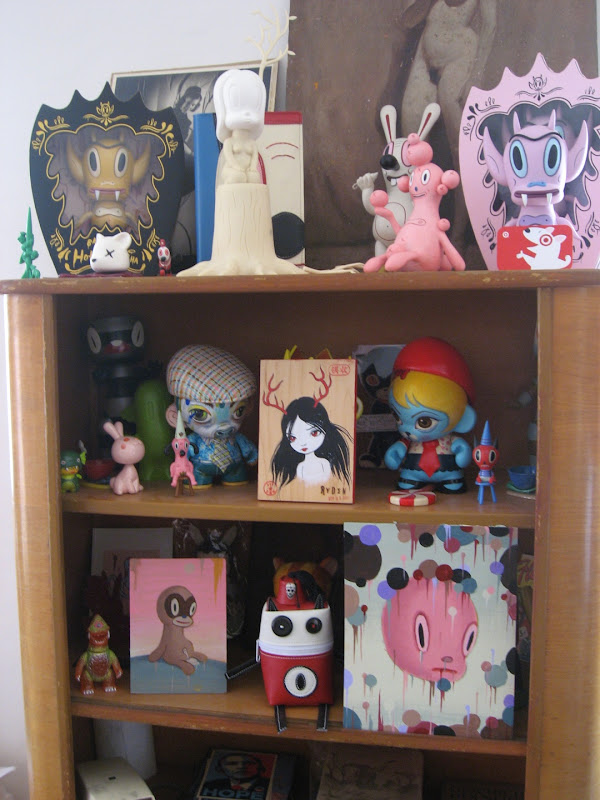
Gary Baseman's Official Site
Thursday, June 19, 2008
Gary Baseman Interview and Studio Tour
Posted by
Teddy Tenenbaum
at
12:08 PM
![]()
![]()
Filed Under: Gary Baseman
Subscribe to:
Post Comments (Atom)


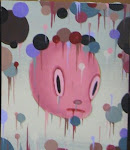
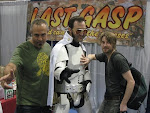




No comments:
Post a Comment